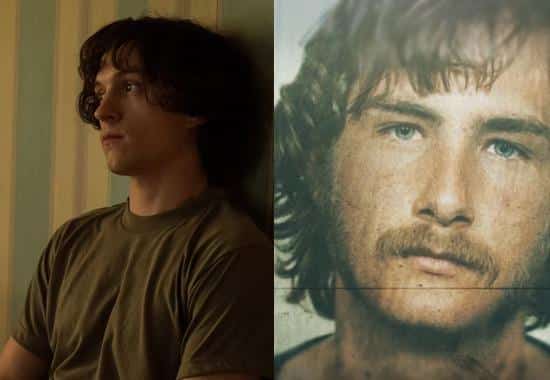Is Danny Sullivan Based on a Real Person? – Akiva Goldsman has skillfully transformed Daniel Keyes’ nonfiction work “The Minds of Billy Milligan” (1981) into an engaging psychological thriller Apple TV+’s miniseries called “The Crowded Room.” This series boasts an outstanding ensemble cast featuring Tom Holland, Amanda Seyfried, Emmy Rossum, Will Chase, Lior Raz, and Laila Robins Henry Eikenberry.
At the core of the series lies Danny Sullivan, played by Tom Holland. Set in 1979, Danny finds himself arrested for involvement in a shooting incident that took place in New York City and is interviewed by Rya Goodwin (Amanda Seyfried) about it. Through their interactions, Danny gradually opens up about his life to Rya and the viewers; gradually sharing events from his past that led him down this tragic path and uncovering some pivotal moments that led him towards self-realization and profound discoveries about himself and those close to him.
Tom Holland’s performance of Danny is deeply convincing, depicting an intriguing character whose past events have left his psyche broken open. Its compelling narrative and authentic performance encourage us to delve further into Danny’s tale while uncovering possible real-life parallels that may exist behind his tale.

Is Danny Sullivan Based on a Real Person?
“The Crowded Room,” featuring Danny Sullivan as its protagonist, draws its inspiration from Billy Milligan – who holds the distinction of becoming the first in U.S. history to be acquitted of criminal charges due to dissociative identity disorder. Billy faced many trials throughout his life, beginning with his father being placed into a mental institution in Florida and then relocated with the family back home – where they then married Chalmer Milligan (an Army World War II veteran), whom he later accused of sexual and physical abuse by.
Billy developed multiple personalities as a form of self-preservation to cope with his difficult environment and survive – something police and Billy’s defence team noticed during their investigation; speaking with him felt like talking with different individuals at different times. One victim positively identified Billy from his mugshot while being arrested. Billy even felt different during this ordeal, confusing everyone involved – including his victim(s).
Psychologists examined Billy and reached a unanimous diagnosis: dissociative identity disorder. Two of Billy’s alter egos, Ragen (a Yugoslavian man) and Adalana (a 19-year-old woman), were responsible for his crimes, while Billy himself, the core personality, was unaware of their activities. This evidence supported Billy’s insanity defence during the trial, which resulted in a unanimous jury verdict of not guilty; instead, Billy was committed to further evaluation and therapy at the hospital.
Billy first entered a psychiatric facility in 1987, eventually receiving care until 1991 despite promising to cover all costs himself; unfortunately, this promise was only fulfilled partially, and he faced further legal trouble in San Diego County during this time for allegedly threatening a judge; after declaring bankruptcy his name no longer associated with any further criminal activities; in his last five years of life Billy returned home and led an isolated life until dying from cancer at age 59 in December 2014.
Daniel Keyes’ 1981 nonfiction work, “The Minds of Billy Milligan,” provides an in-depth account of Billy’s life based on interviews with him and his loved ones. This book served as a basis for the Apple TV+ show starring Tom Holland as Danny Milligan; during the filming of the series Tom Holland frequently made references to this book; Tom Holland conducted extensive research for this role by interviewing psychiatrists and psychologists as well as watching “Billy the Kid.”
However, it should be remembered that all characters onscreen represent distinct individuals with their narratives despite any similarities that might exist between characters played by Tom Holland or Billy with separate narratives that could possibly overlap or overlap between characters played by Tom Holland or another actor playing another character similar to him or another character in real life who share similarities while remaining distinct individuals with individual narratives of their own lives despite similar characteristics between them both.
Tom Holland was drawn to playing Danny due to his complex and misunderstood personality, yet he admits it was emotionally draining for him to prepare. After taking a break from performing and speaking to psychiatrists about Danny and Billy’s challenges and mental health in general, Holland found these conversations both insightful and enlightening.
Holland expressed his hope that viewers of the show would connect with Danny Sullivan’s story, developing increased respect and empathy for individuals experiencing mental health challenges. Through their exposure to Danny’s journey, he sought to educate people on mental health’s power and challenges. Therefore, although Danny draws inspiration from Billy Milligan, showrunners have created his unique narrative, which ensures his unique characterisation.
You can stream “The Crowded Room” episodes on Apple TV+.













